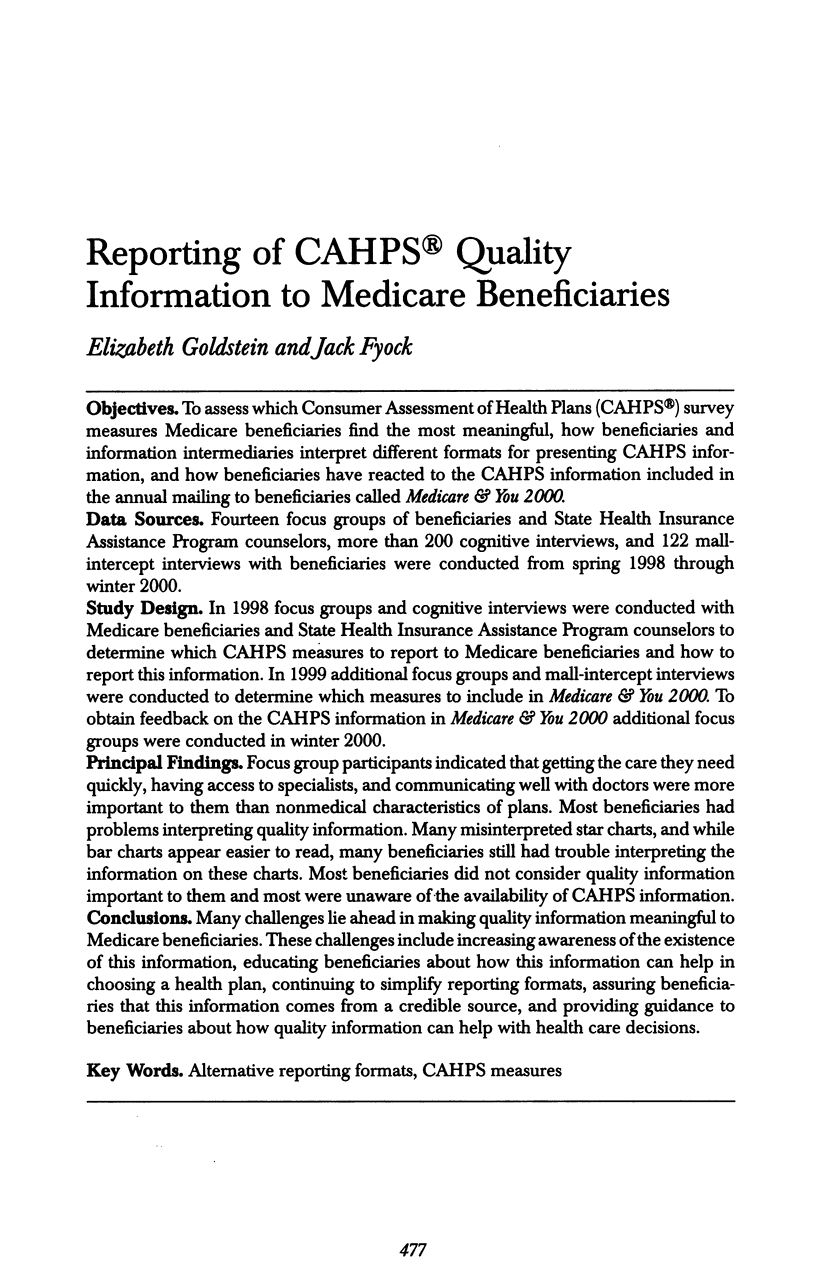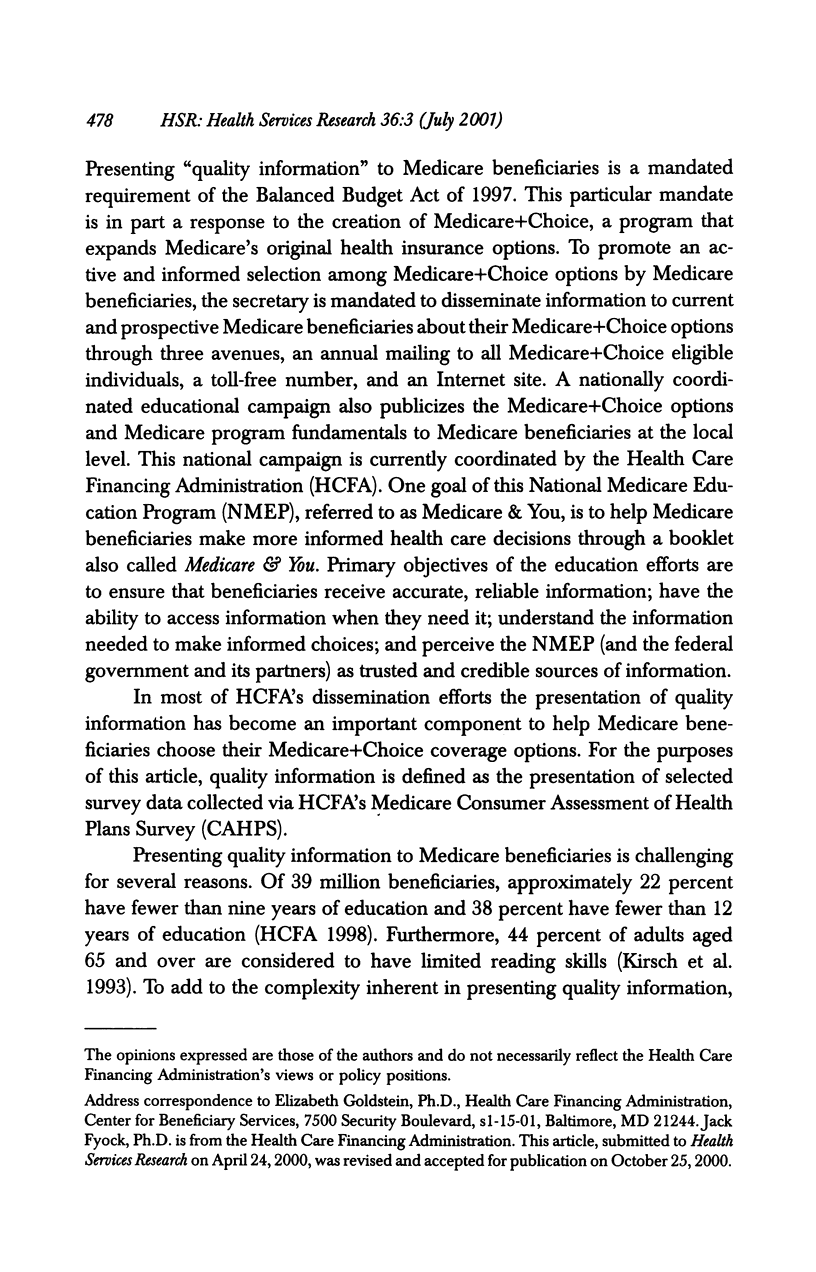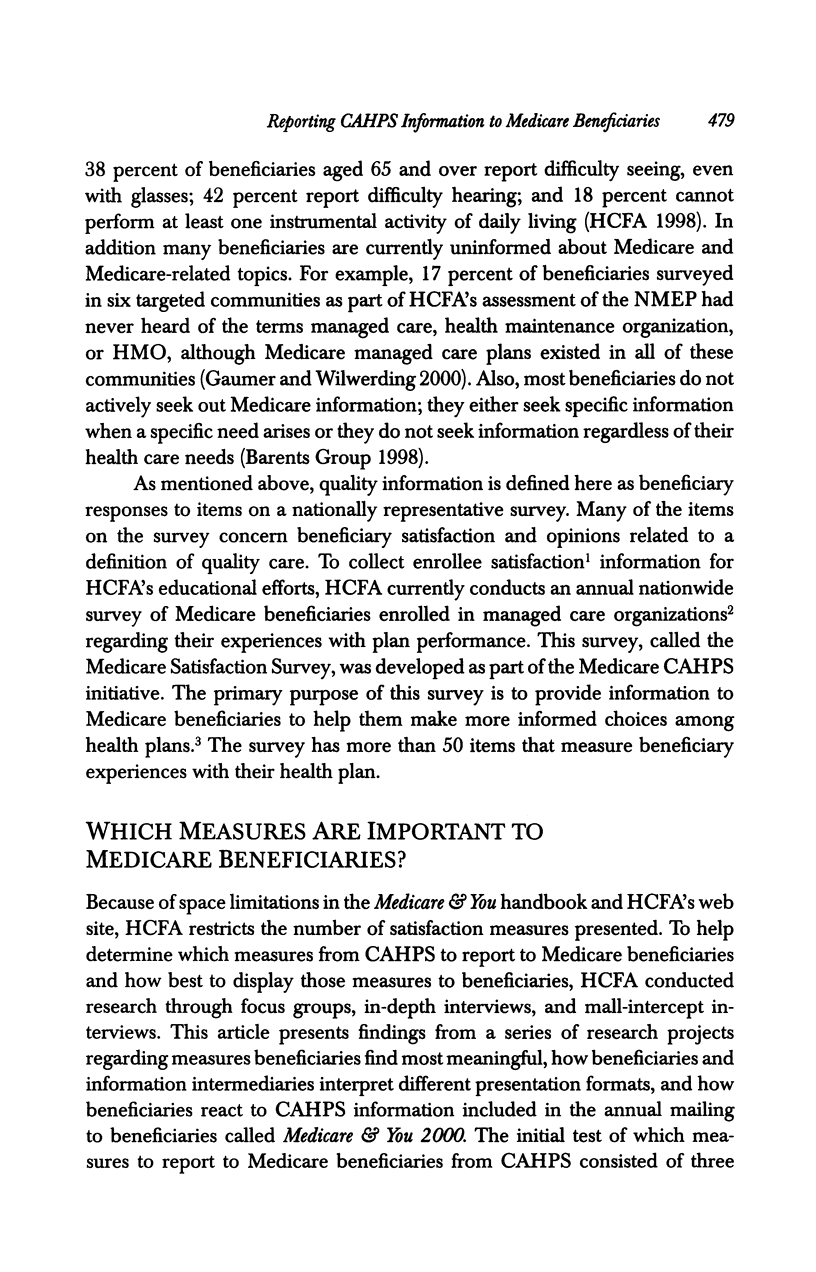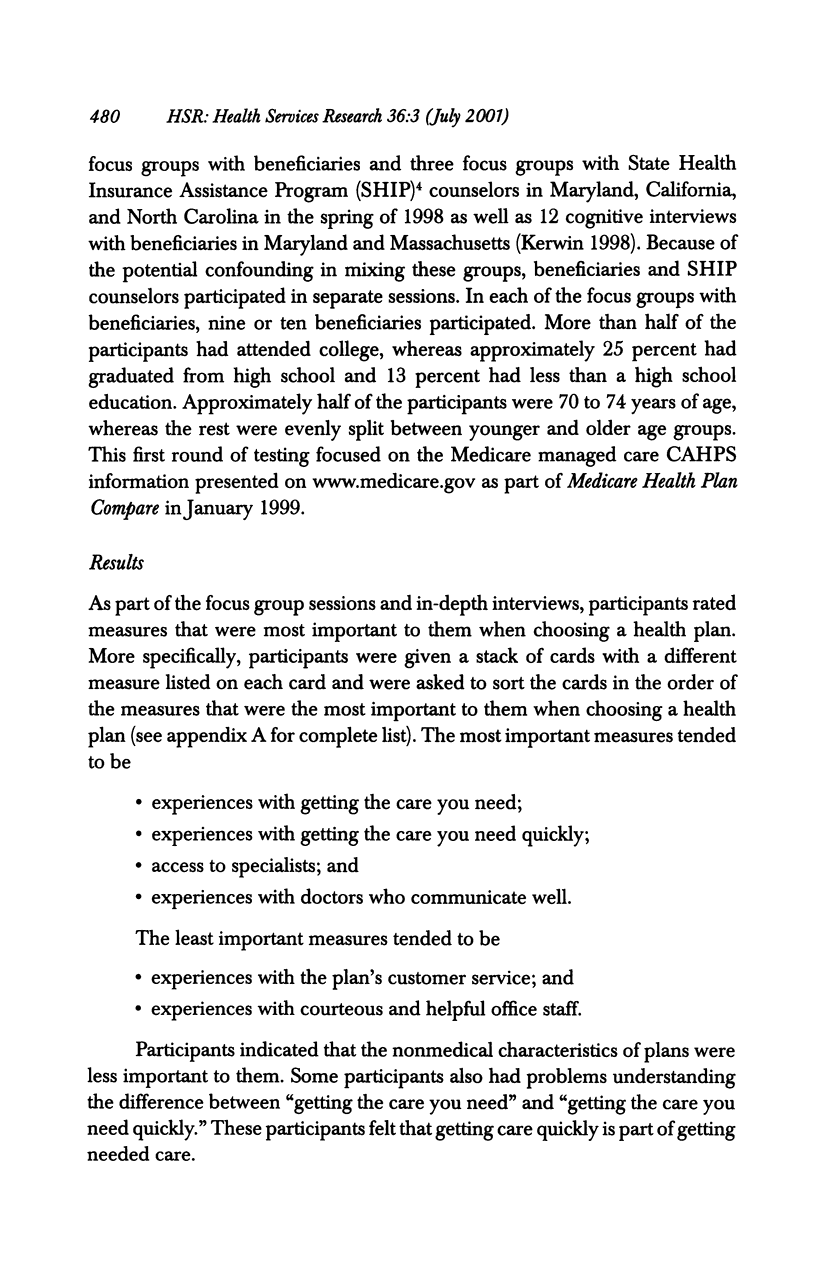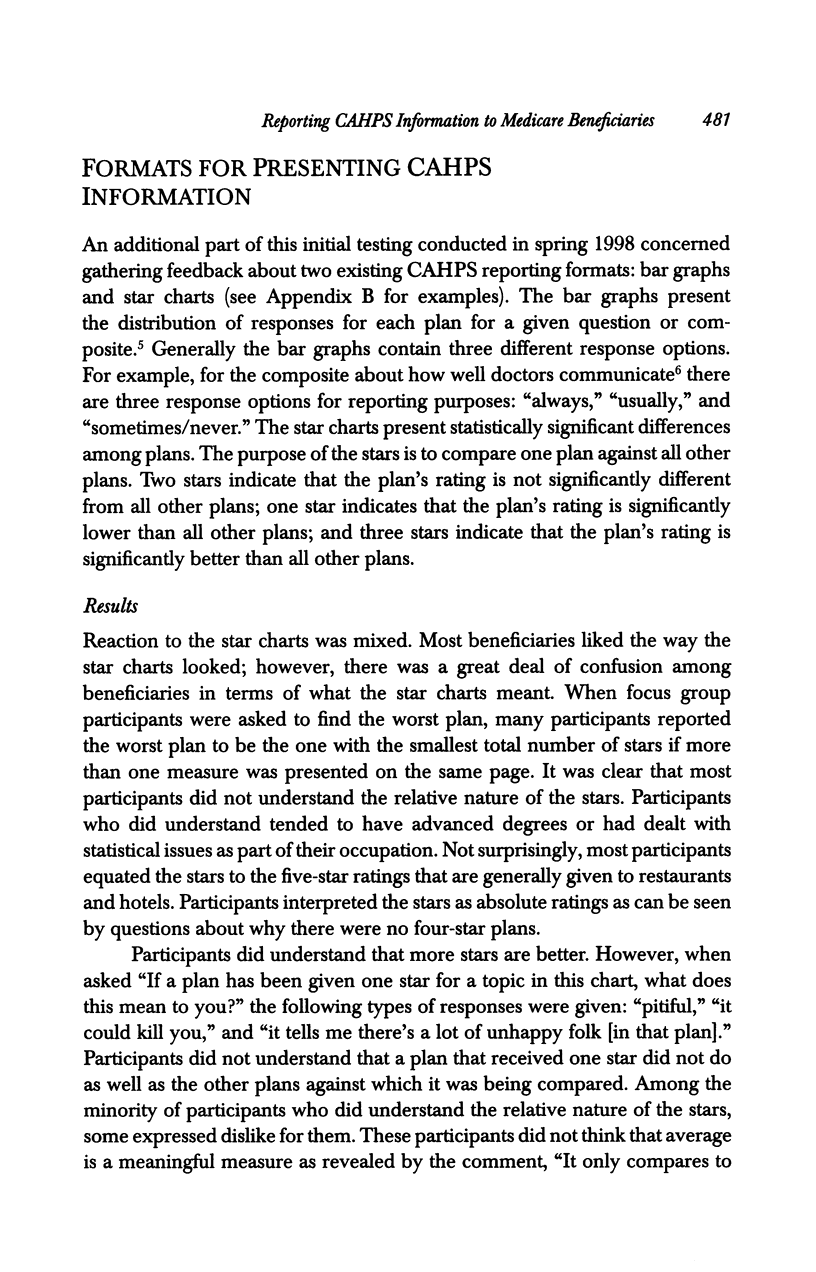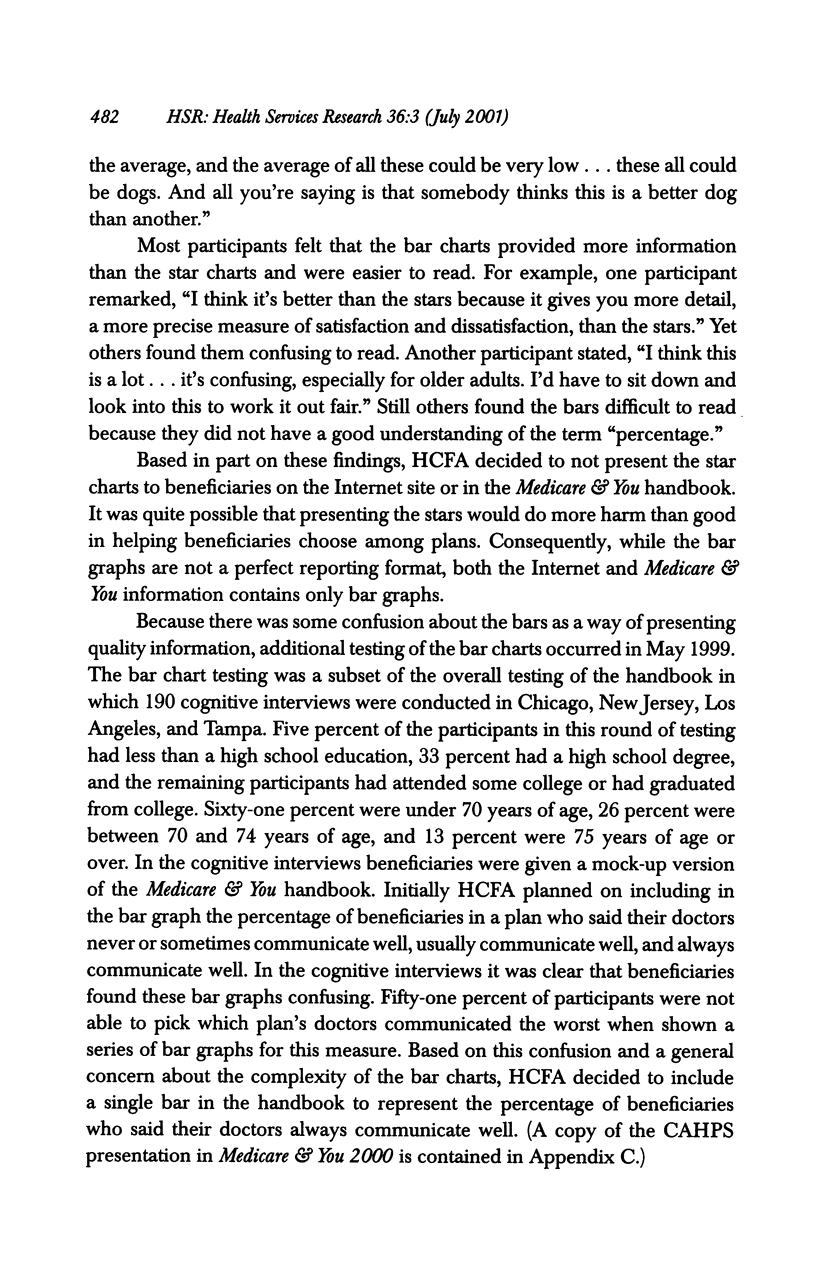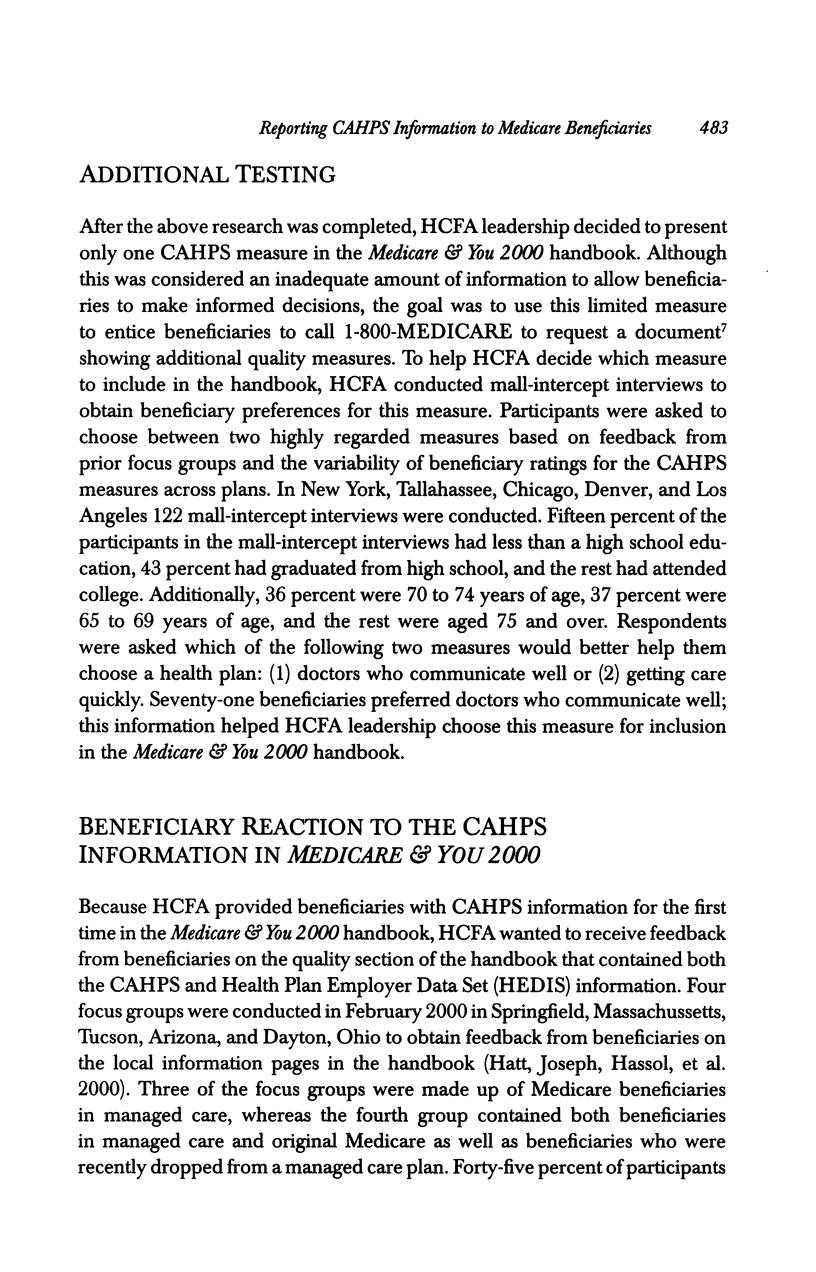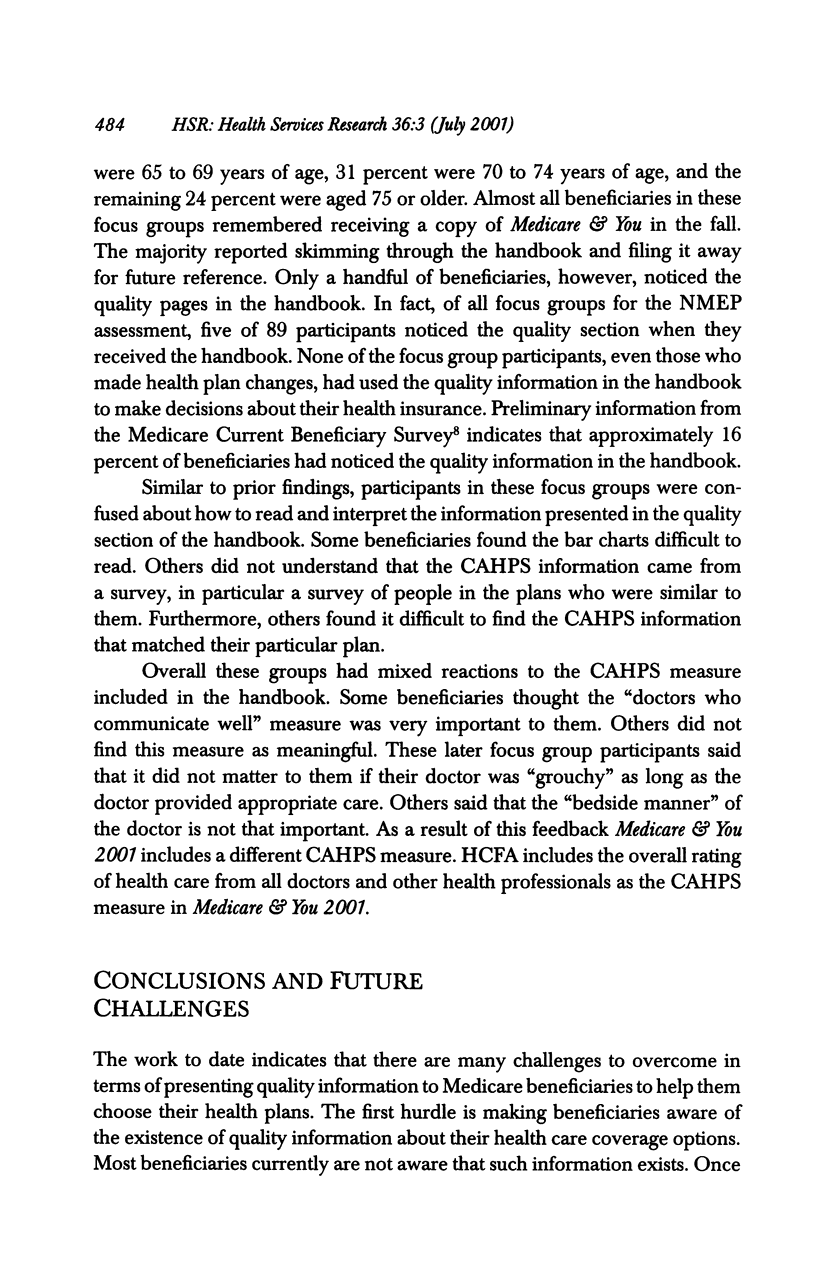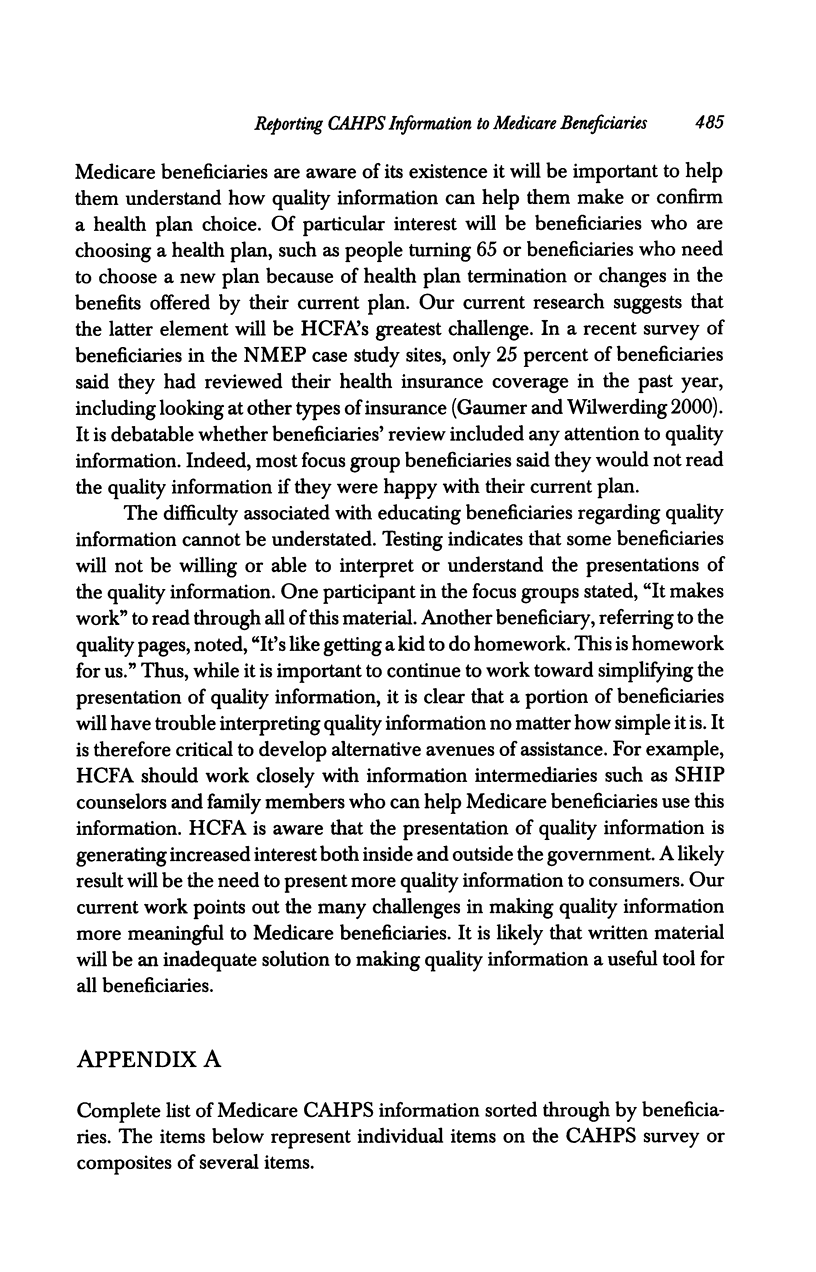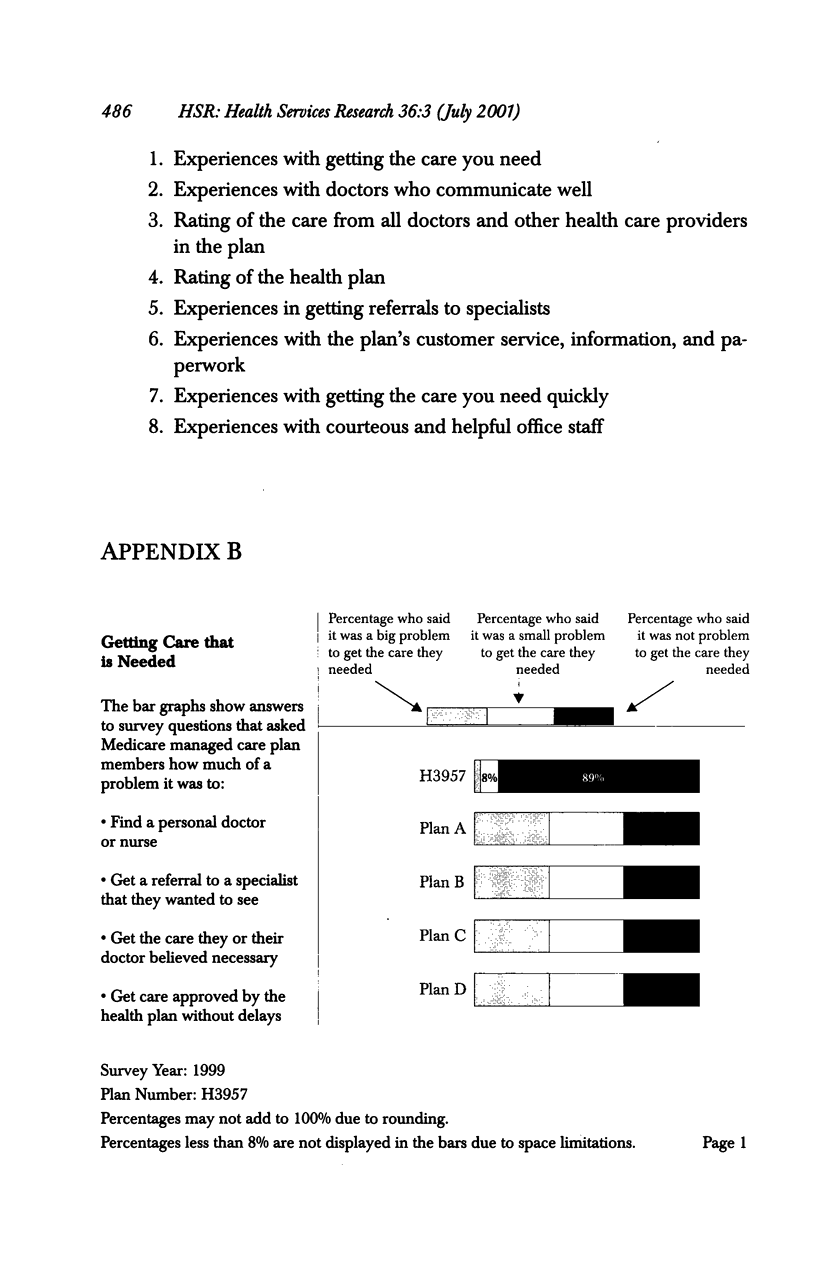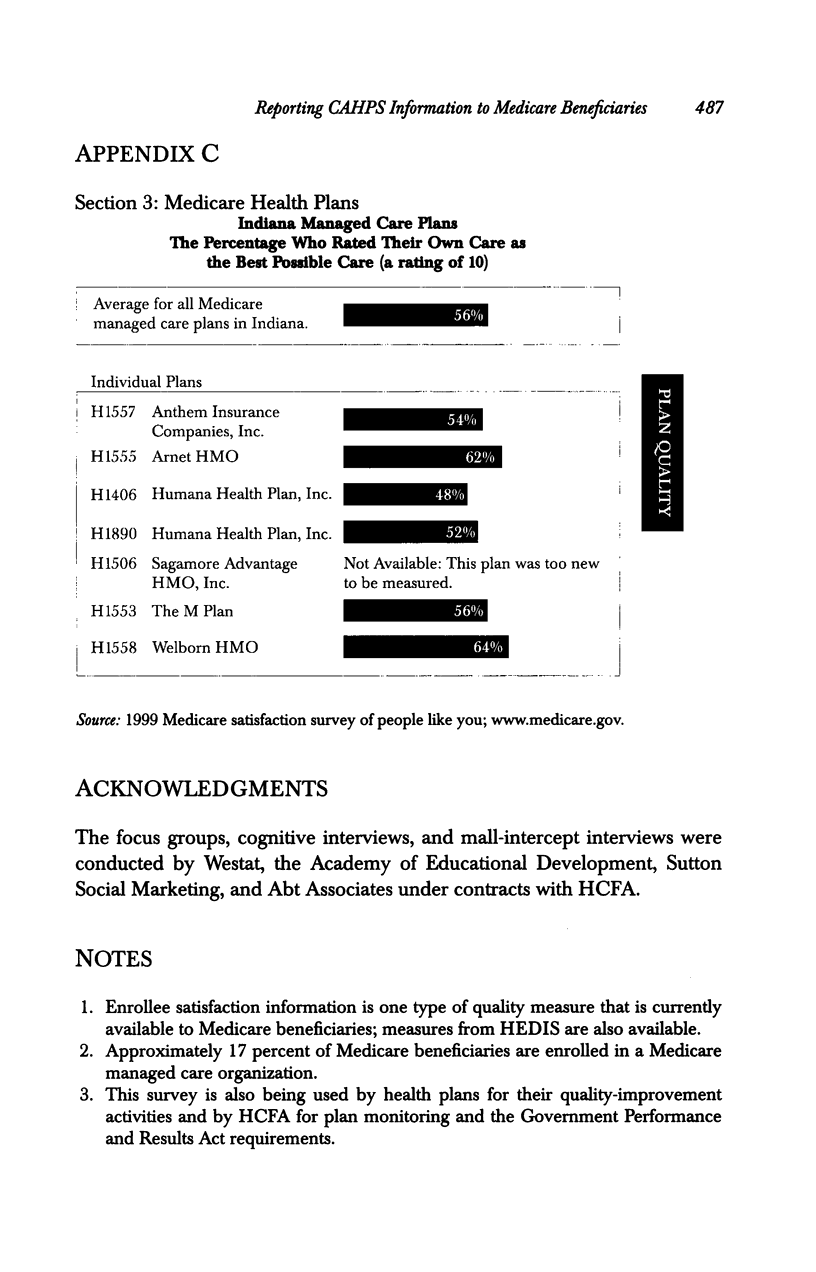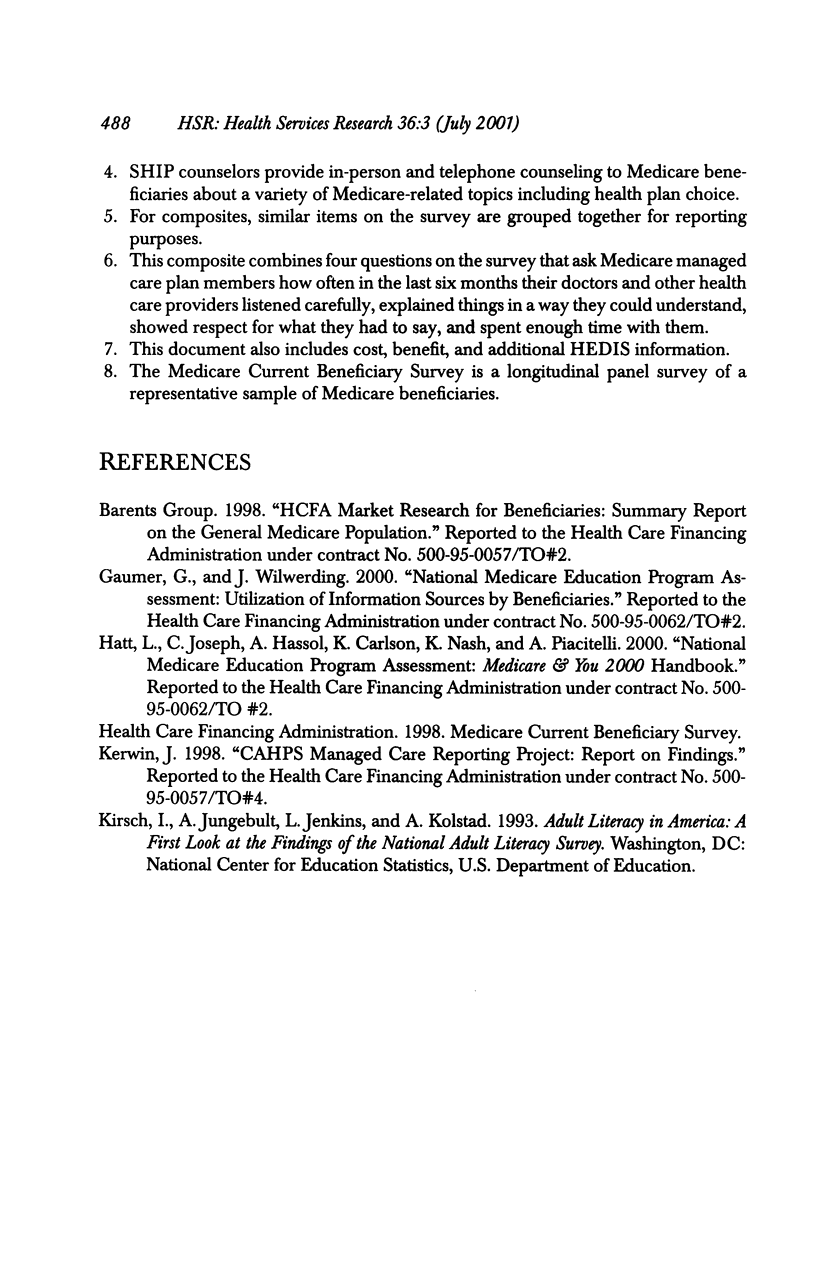Abstract
OBJECTIVES: To assess which Consumer Assessment of Health Plans (CAHPS) survey measures Medicare beneficiaries find the most meaningful, how beneficiaries and information intermediaries interpret different formats for presenting CAHPS information, and how beneficiaries have reacted to the CAHPS information included in the annual mailing to beneficiaries called Medicare & You 2000. DATA SOURCES: Fourteen focus groups of beneficiaries and State Health Insurance Assistance Program counselors, more than 200 cognitive interviews, and 122 mall-intercept interviews with beneficiaries were conducted from spring 1998 through winter 2000. STUDY DESIGN: In 1998 focus groups and cognitive interviews were conducted with Medicare beneficiaries and State Health Insurance Assistance Program counselors to determine which CAHPS measures to report to Medicare beneficiaries and how to report this information. In 1999 additional focus groups and mall-intercept interviews were conducted to determine which measures to include in Medicare & You 2000. To obtain feedback on the CAHPS information in Medicare & You 2000 additional focus groups were conducted in winter 2000. PRINCIPAL FINDINGS:Focus group participants indicated that getting the care they need quickly, having access to specialists, and communicating well with doctors were more important to them than nonmedical characteristics of plans. Most beneficiaries had problems interpreting quality information. Many misinterpreted star charts, and while bar charts appear easier to read, many beneficiaries still had trouble interpreting the information on these charts. Most beneficiaries did not consider quality information important to them and most were unaware of the availability of CAHPS information. CONCLUSIONS: Many challenges lie ahead in making quality information meaningful to Medicare beneficiaries. These challenges include increasing awareness of the existence of this information, educating beneficiaries about how this information can help in choosing a health plan, continuing to simplify reporting formats, assuring beneficiaries that this information comes from a credible source, and providing guidance to beneficiaries about how quality information can help with health care decisions.
Full text
PDF